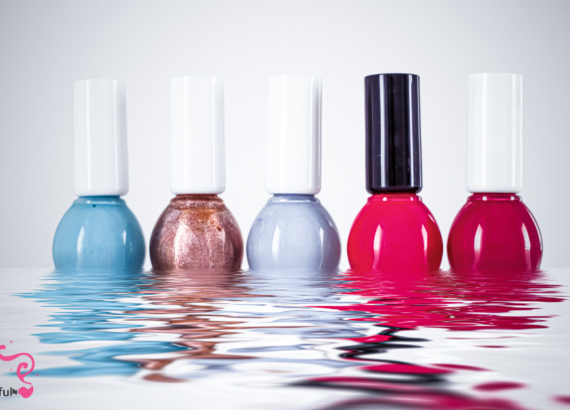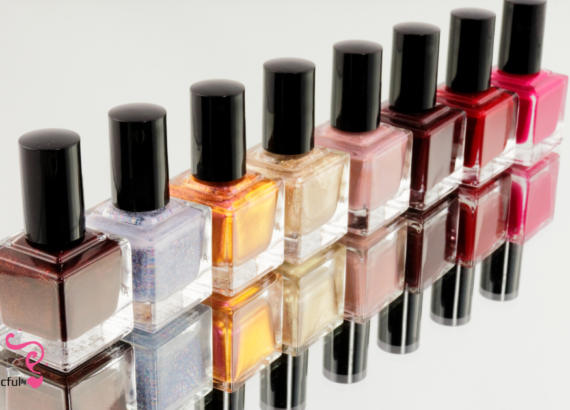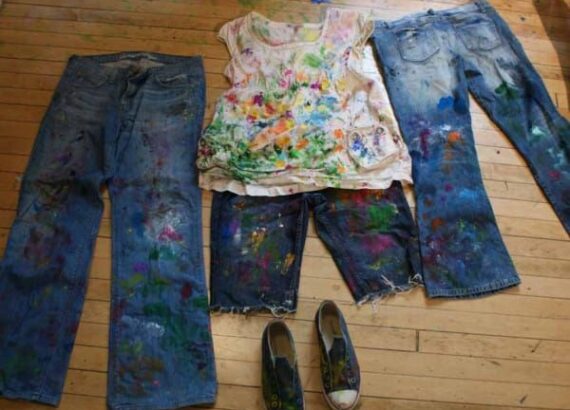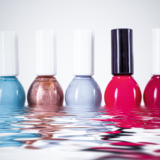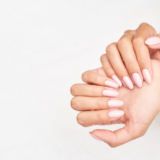How to Clean Acrylic Paint off Brushes Between Colors
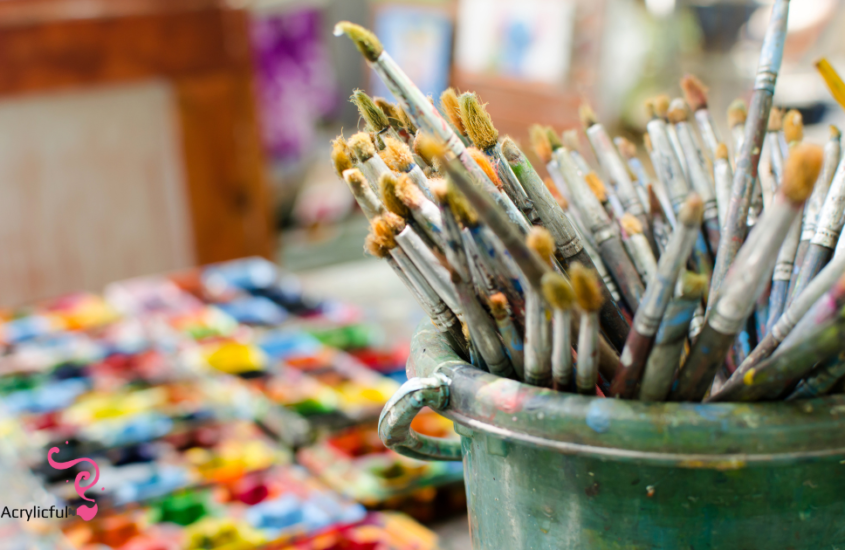
Introduction
Artists often find themselves in a colorful conundrum, needing to switch between acrylic paint colors without the risk of muddying their artwork. The key lies in keeping your brushes pristine. In this guide, we’ll explore effective techniques to clean acrylic paint off brushes between colors, ensuring your artistic vision remains vivid and true.
I. Importance to clean acrylic paint off brushes between colors
Before delving into the cleaning process, let’s understand why keeping your brushes clean is crucial. Dirty brushes not only compromise color purity but can also affect the texture and precision of your strokes. Maintaining clean brushes is an essential aspect of any artist’s routine.
II. Materials Needed
Gather your materials before starting to clean acrylic paint off brushes between colors. You’ll need water, mild soap, a brush comb or toothbrush, alcohol (for stubborn paint), and a brush conditioner.
Step 1: Rinse with Water
Begin by rinsing your brush under running water. This helps remove the excess paint and prepares it for the next color.
Step 2: Use Mild Soap
Apply a small amount of mild soap to your wet brush and lather it gently. This step ensures a deeper clean without damaging the bristles.
Step 3: Brush Comb or Toothbrush Technique
For stubborn paint, use a brush comb or an old toothbrush. Gently comb through the bristles to dislodge any remaining pigment.
Step 4: Alcohol Rinse for Stubborn Paint
If some paint persists, dip the brush in rubbing alcohol. This dissolves tough acrylic residues without harming the brush.
Step 5: Condition the Brushes
After cleaning, use a brush conditioner to keep the bristles soft and pliable. This step contributes to the longevity of your brushes.
III. Common Mistakes to Avoid
While the process of cleaning acrylic paint off brushes is essential, it’s equally crucial to be aware of common mistakes that artists often make. Avoiding these errors will ensure the longevity of your brushes and maintain their peak performance.
1. Using Harsh Chemicals:
- One common mistake is resorting to harsh chemicals in an attempt to remove stubborn paint. Chemicals like acetone or strong solvents can damage the bristles, leading to fraying or loss of shape. Opt for gentler cleaning solutions to preserve the integrity of your brushes.
2. Leaving Brushes in Water for Too Long:
- Allowing brushes to soak in water for extended periods is another pitfall. Prolonged exposure to water can weaken the glue that holds the bristles in place, causing them to shed or become misshapen. Rinse and clean your brushes promptly after use to prevent water damage.
3. Skipping the Conditioning Step:
- Neglecting to use a brush conditioner is a common oversight. Conditioning helps keep the bristles soft and pliable, contributing to the overall lifespan of your brushes. Don’t skip this crucial step in the cleaning process.
4. Neglecting Regular Cleaning:
- Waiting too long between cleaning sessions is a mistake that can lead to the buildup of dried paint. Regularly clean your brushes after each painting session to prevent paint residues from hardening and becoming challenging to remove.
5. Ignoring Brush Type Considerations:
- Different brushes have varying bristle materials, and each requires specific care. Avoid using the same cleaning approach for all brushes. Delicate or natural hair brushes may require more gentle cleaning methods compared to synthetic ones.
6. Using Excessive Force:
- Vigorous scrubbing or applying excessive force while cleaning can lead to bristle damage. Treat your brushes with care, using gentle strokes and appropriate tools to remove paint residues.
7. Storing Brushes Improperly:
- After cleaning, storing brushes improperly can negate your cleaning efforts. Ensure they are stored upright, with enough space to prevent bristle deformation or contact between brushes.
8. Overlooking Dried Paint:
- If your brushes have dried paint, ignoring the issue can result in permanent damage. Soak them in water for a few hours before attempting to clean, making the process more manageable.
9. Rushing the Cleaning Process:
- Cleaning brushes is a meticulous task that requires patience. Rushing the process may result in incomplete cleaning or unintentional damage. Take your time and ensure each step is thorough.
10. Neglecting Environmental Considerations:
- Disregarding the environmental impact of your cleaning practices is a mistake. Opt for eco-friendly options and be mindful of water usage to contribute to a more sustainable artistic process.
IV. Essential Tips for Brush Maintenance and Longevity
Ensuring the longevity of your brushes is vital for sustained artistic excellence. Here are a few crucial tips to clean acrylic paint off brushes between colors
Tip# 1. Clean Promptly
First thing to remember, learn your brushes immediately after each painting session to prevent paint from drying and becoming challenging to remove.
Tip# 2. Gentle Handling:
Handle your brushes with care, avoiding aggressive strokes that may lead to bristle damage or deformation.
Tip# 3. Proper Drying:
Allow your brushes to dry thoroughly before storage, laying them flat or hanging them with the bristles pointing down to prevent water damage.
Tip# 4. Quality Investment:
Also, invest in high-quality brushes as they offer durability and better performance over time, making them a worthwhile investment.
Tip# 5. Appropriate Brush Selection:
Use the right brush for the task at hand, preventing unnecessary stress on the bristles and ensuring optimal performance.
Tip# 6. Immediate Reshaping:
Reshape bent bristles while the brush is still wet to maintain the original form and prevent permanent deformation.
Tip# 7. Protective Cases for Travel:
Use protective cases when traveling with your brushes to prevent damage and ensure they remain in top condition.
Tip# 8. Regular Visual Inspections:
Periodically inspect your brushes for wear, loose bristles, or damage. Address any issues promptly to prevent further deterioration.
Tip# 9. Rotate Brush Usage:
Rotate the usage of your brushes to distribute wear evenly and extend the lifespan of your entire collection.
V. DIY Brush Cleaner Recipe
Creating a DIY brush cleaner at home is not only economical but also an efficient way to keep your brushes in pristine condition. Here’s a simple recipe using common household items:
Ingredients:
- Olive Oil: 1 part
- Dish Soap (Mild): 1 part
- Water: 2 parts
Instructions:
- Mixing the Ingredients:
- In a small container, combine one part olive oil, one part mild dish soap, and two parts water. Stir the mixture gently until it forms a consistent solution.
- Application:
- Dip your brush into the solution, ensuring the bristles are fully coated. Swirl the brush around to loosen any paint residues.
- Brush Comb or Toothbrush Technique:
- For stubborn paint, use a brush comb or an old toothbrush. Gently comb through the bristles to dislodge any remaining pigment.
- Rinsing:
- Rinse the brush under running water to remove the cleaning solution and loosened paint.
- Conditioning:
- After cleaning, use a brush conditioner to maintain the bristles’ softness and flexibility.
This DIY cleaner not only effectively removes paint residues but also ensures your brushes remain in optimal condition.
VI. Storing Clean Brushes Properly
Proper storage is essential to maintain the cleanliness and shape of your brushes. Follow these best practices for storing your clean brushes:
Best Practices:
- Vertical Storage:
- Store your brushes upright in a container. This prevents the bristles from bending or fraying.
- Avoid Crowding:
- Ensure there is ample space between brushes to prevent them from touching. This reduces the risk of deformation.
- Well-Ventilated Area:
- Store your brushes in a well-ventilated area to allow them to dry thoroughly. Avoid enclosed spaces or containers that may trap moisture.
- Protective Caps:
- If your brushes have protective caps, use them to shield the bristles from dust and damage.
- Separate by Type:
- If you have brushes of different types, consider storing them separately to prevent cross-contamination of paint residues.
By adhering to these storage practices, you not only protect your clean brushes but also ensure they’re ready for use whenever inspiration strikes.
VII. Benefits of Clean Brushes for Artwork
Maintaining clean brushes is not just about hygiene; it significantly influences the quality of your artwork. Here are the positive impacts of using clean brushes in your artistic endeavors:
1. Enhanced Color Accuracy:
Clean brushes ensure that each color applied is true and vibrant. Residues from previous sessions can mix with new colors, compromising the intended hues. Clean brushes contribute to enhanced color accuracy, allowing your artwork to reflect your vision faithfully.
2. Improved Brushwork Precision:
A clean brush provides better control and precision in your brushstrokes. Residual paint can alter the texture and flow of your strokes, affecting the overall quality of your work. Clean brushes allow for sharper, more controlled brushwork, giving your artwork a polished and professional appearance.
3. Prolonged Brush Lifespan:
Regular cleaning and proper maintenance contribute to the longevity of your brushes. Paint residues can accumulate and harden, leading to bristle damage over time. Clean brushes retain their original form, ensuring they remain reliable tools for a more extended period.
4. Consistent Texture:
Clean brushes maintain a consistent texture in your artwork. The presence of dried paint or residues can create unintended textures, affecting the overall aesthetic. A thorough cleaning routine ensures that each brushstroke contributes to the desired texture and visual appeal.
5. Minimized Color Muddying:
With clean brushes, the risk of unintentional color mixing or muddying is significantly reduced. Each color remains distinct, allowing for more intricate and nuanced artwork. Clean brushes enable you to express your creativity with clarity and precision.
VIII. Environmental Considerations
Artistic practices can have environmental implications, and it’s essential to consider eco-friendly options for brush cleaning. Here are ways to promote sustainability in your artistic endeavors:
1. Water Conservation:
Use a water basin for cleaning your brushes instead of continuous running water. This minimizes water wastage and aligns with eco-friendly practices.
2. Biodegradable Soaps:
Opt for biodegradable and eco-friendly soaps in your DIY brush cleaner or cleaning solutions. This choice reduces the environmental impact of the chemicals used in your artistic process.
3. Sustainable Brush Choices:
Consider brushes with sustainable materials, such as bamboo handles or synthetic bristles. These options are often more environmentally friendly than traditional brush materials.
4. Responsible Disposal:
Dispose of used cleaning materials responsibly. If possible, use containers made from recycled materials and recycle them appropriately.
5. Educate and Encourage:
Share eco-friendly brush cleaning practices with fellow artists to create awareness. Encourage a community of artists who prioritize sustainability in their creative processes.
Conclusion
Lastly, in the world of artistry, cleanliness is not just a virtue; it’s a necessity. Mastering the art to clean acrylic paint off brushes between colors is an essential skill for artists who strive for excellence. By incorporating the techniques outlined in this guide into your routine, you ensure that your brushes remain not only clean but also reliable tools for your creative endeavors.
The positive impacts of clean brushes on your artwork are manifold, ranging from enhanced color accuracy and improved brushwork precision to a prolonged brush lifespan. Each stroke becomes a deliberate expression of your artistic vision, free from the unintentional blending or muddying that can occur with dirty brushes.
Regular cleaning is not just a maintenance task; it’s a commitment to the quality of your craft. It’s a recognition that every stroke matters, and the tools you use play a crucial role in bringing your artistic vision to life. Clean brushes contribute to consistent textures, minimized color muddying, and overall elevated artwork.
As you embrace the habit of keeping your brushes clean, remember that it’s not just about preserving their longevity; it’s about investing in the longevity of your artistic journey. Clean brushes empower you to explore your creativity with clarity, precision, and a commitment to excellence.
So, let the routine of cleaning your brushes become a ritual—a ritual of care, respect for your tools, and a dedication to the art you create. In doing so, you not only honor your craft but also set the stage for continuous artistic growth and the creation of truly exceptional works.
FAQs
Q1. How often should I clean my brushes?
A1. Regularly clean your brushes after each painting session to maintain their performance.
Q2. Can I use regular soap instead of mild soap?
A2. It’s best to use mild soap to avoid damaging the bristles and preserving the brush’s quality.
Q3. Is it necessary to use a brush conditioner?
A3. While not mandatory, a brush conditioner enhances the lifespan and performance of your brushes.
Q4. What if my brushes have dried paint?
A4. Soak them in water for a few hours before following the cleaning steps to loosen the dried paint.
Q5. Can I use the DIY brush cleaner on all types of brushes?
A5. Yes, the DIY brush cleaner is safe for most brushes, but avoid using it on delicate or natural hair brushes.
